Searching for vintage fashion, whether you hit the fairs, charity shops or vintage boutiques, is a lot like treasure hunting. It’s the thrill of finding that one gem among piles of stuff and proudly adding it to your own personal collection. I have been doing this for years, adding to the hand-picked treasure trove we call Vinter Vintage, and on my journey there has been a few overtly passionate cries of joy.
To many, identifying the authentic vintage piece can be a challenge and it doesn’t help that designers continue to borrow trends from the past to recreate iconic looks. But with a little background knowledge, dating vintage clothes doesn’t have to be intimidating. Once you get used to the feel of vintage fabrics, the look of vintage tags, and the general styles of each era, dating a piece of clothing can be relatively straight forward.
Here are five quick tips to narrow down the time range and determine a garment’s vintage status.
Tip #1: Do your research.
Before you head out vintage shopping familiarize yourself with the silhouettes and fashion trademarks of the different eras. 1950s garments, for example, tend to be hourglass silhouette with wasp waists and hemlines reaching mid-calf. It wasn’t until the 1960s that hemline rose above the knee with the introduction of the mini.
Bring your smartphone with you so you can research silhouettes and labels on the go.
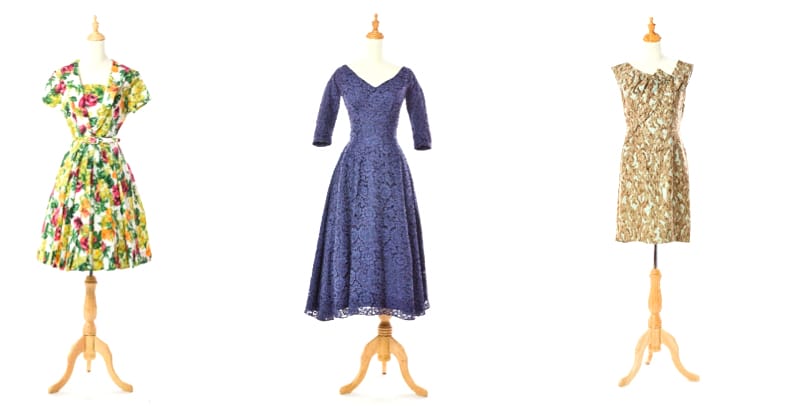
From left: 1940s, 1950s and 1960s Dresses.
Tip #2: Learn how to decode labels.
Labels are rare previous to 1950s as only the biggest designers and fashion houses would mark their garments, but if the item you are looking at has a label that is a good place to start. Look out for hidden labels in the seams and hems. Keep in mind that missing labels do not necessarily translate to vintage as they could have been removed.
1 | Start with the name.
Time to whip out the smartphone. Designer labels have evolved over time and there are great label resources online (such as Vintage Fashion Guild) that can help you determine the era of the particular label. Search online for information about the brand and look up when the brand was established or registered.
2 | Care about the care labels.
Laundering instruction (first incorporated in the 1940’s) were only made mandatory in the US in 1971. In Europe garment-care symbols were developed in 1958, but were never made mandatory.
#InsiderTip: If your garment has a sewn-in label with care symbols, it was probably manufactured in the ‘70s or later.
3 | Fibers tell a story.
Since 1960, clothes sold in the US have been required to carry labels stating the fiber content with percentages. If you find a fiber tag without a percentage it may be pre-1960s. Fabric content labels only became a requirement in the UK in 1986.
#InsiderTip: The more labels it has, and the more details they give, the newer garment is.
Tip #3: Check the zipper.
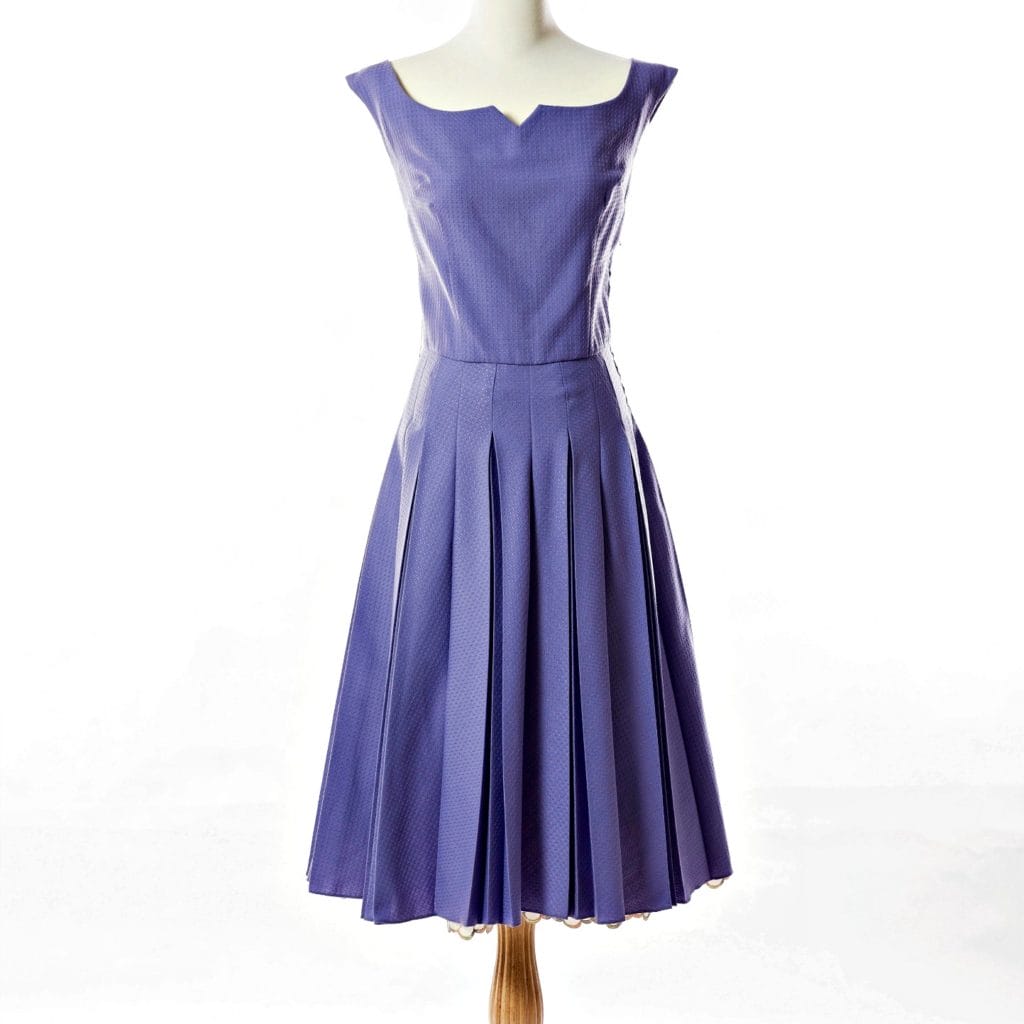
Zipper on a 1950s dress, front view
Zippers are incredibly helpful when dating a vintage dress. The two things to look for are metal zippers, and zipper placement. Keep in mind the zipper could have been replaced. Metal zippers were incorporated into garments in the 1930’s and used up until the 1960s. Plastic zippers (invented in 1940) became common in the 1960s. A metal zip indicates that the garment is likely to date pre-1970.
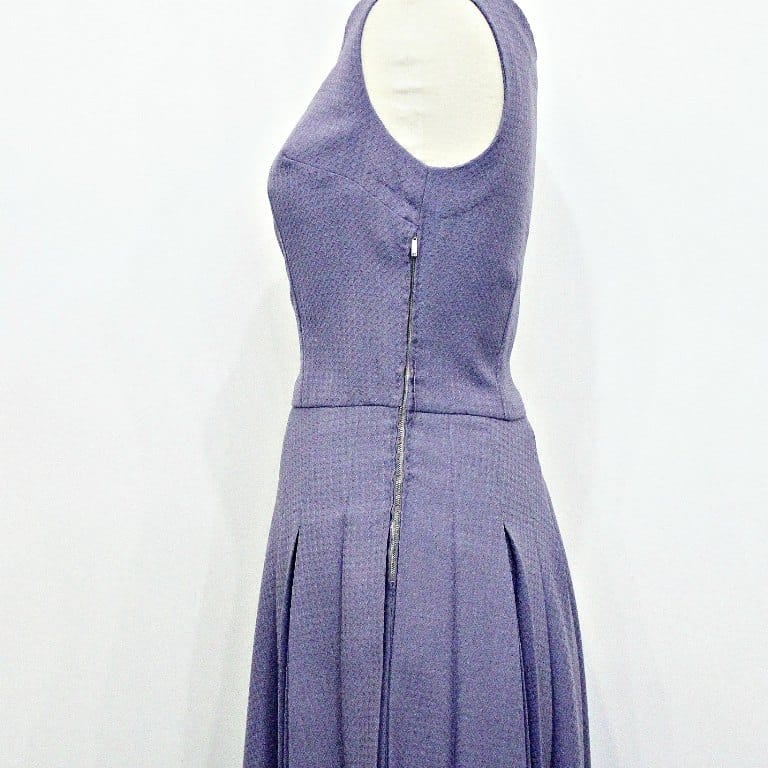
Zipper on a 1950s dress, side view
Zipper placements have changed throughout the decades. A zipper in the side seam indicates the dress was made between the 1930’s and 1960’s. Short center-back zippers were most common between 1930s-1940s and long center-back zippers indicate the garment dates to the late 1950’s or later.
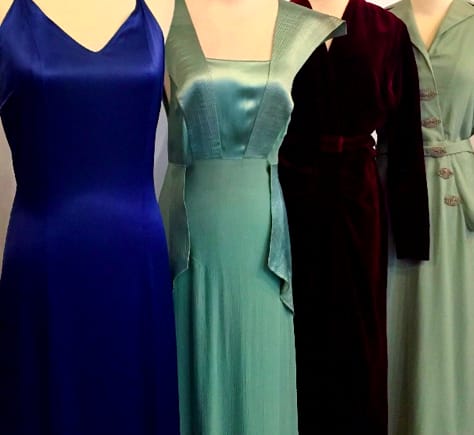
Tip #4: It’s all about the construction.
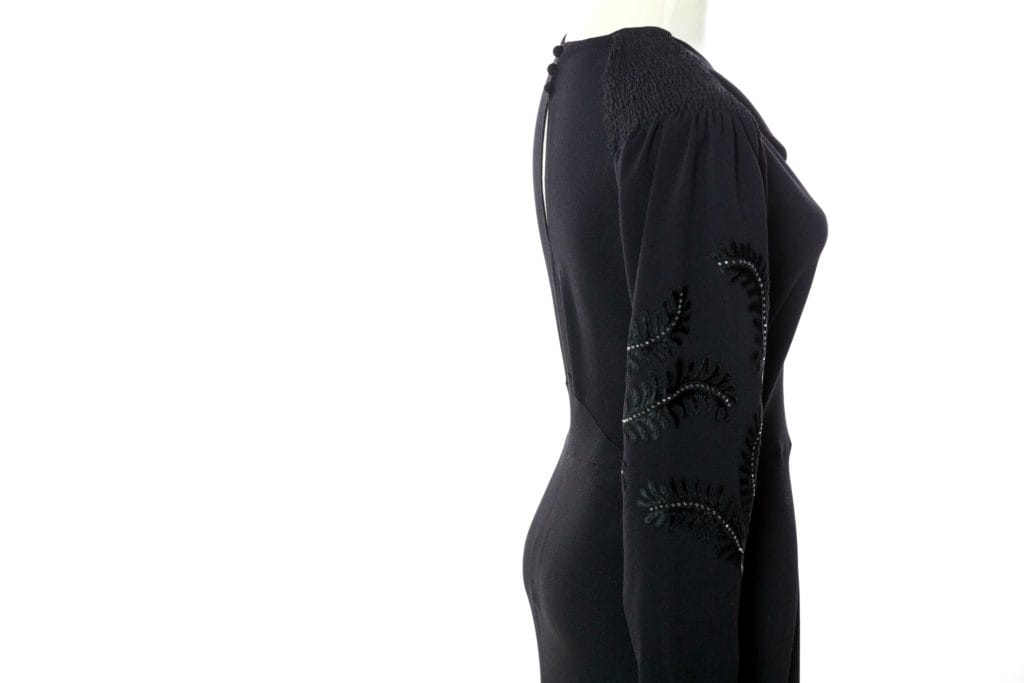
Detailing on a 1930s Dress
Keep an eye on the quality of the construction. The older a garment is, the more likely it is to be handmade and carry more detailed construction methods. Details such as little clips for your bra strap and poppers to prevent gaping will be more common in garments that are pre-1960s. Shorter sleeves that would show off the gloves were popular from the late 1930s through the 1950s. Armholes were cut high and fitted in the 1950s-1970s, whereas deep armholes were common in the 80’s.
Tip #5: Be a fabric detective.
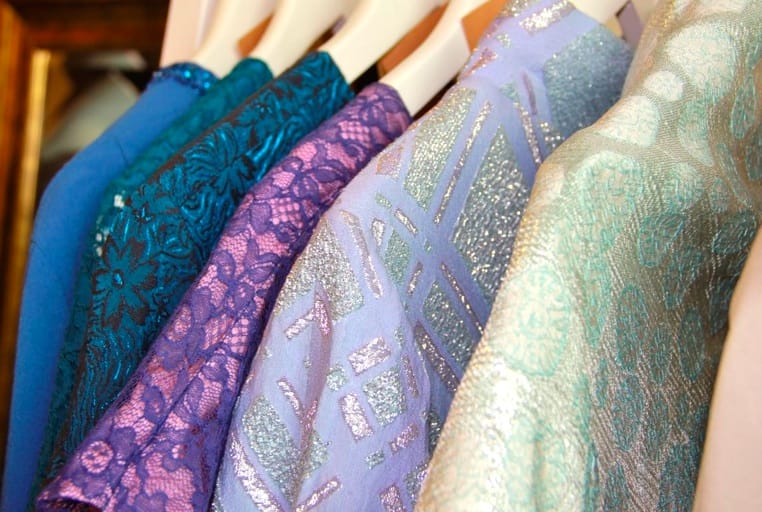
Defining what precisely a fabric is can be subjective, but if you’re lucky enough to have a fabric label then there’s a few common things to look for. Rayon, was a popular fabric for dresses up until the 1950s, after which nylon and polyester became favorites. Lycra and spandex are fabrics of the 1980s. Fabrics prior to the 1950s were much better quality than the fabrics we know today, and some do not even exist anymore. When you touch a vintage dress next to a new dress, you will feel the difference in quality.
Read more on all things vintage on #BAZAARVintageView



